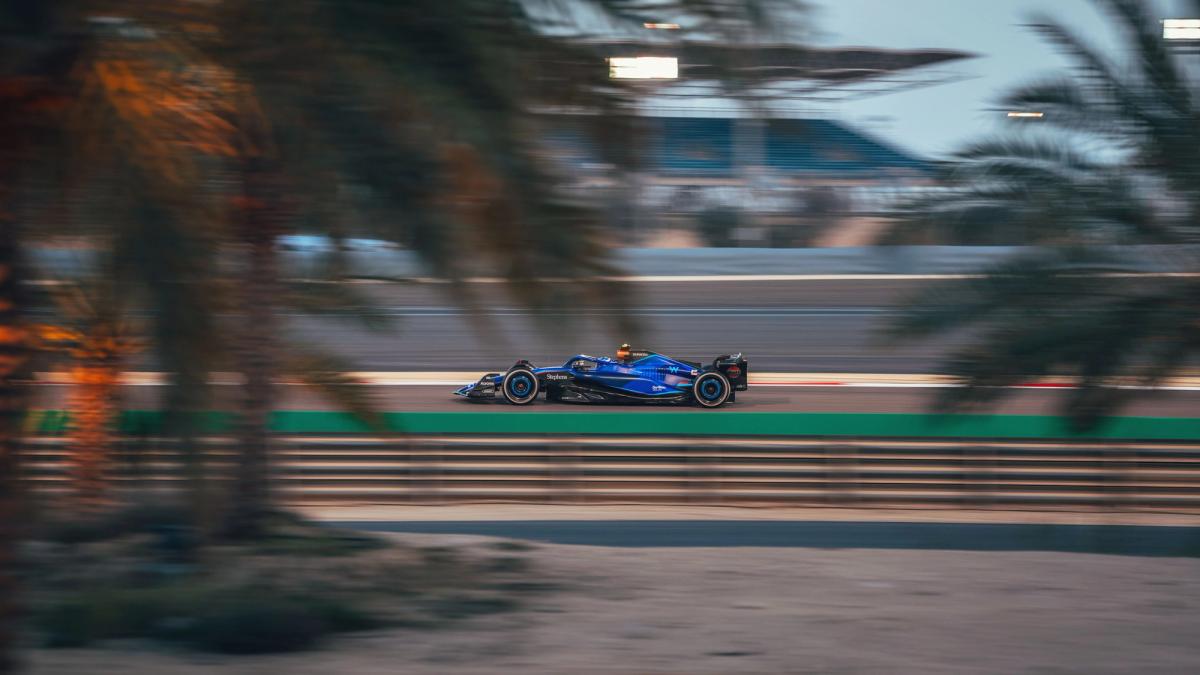As the Formula 1 circus slowly awakens from its winter slumber after the recent car launches, we're approaching some of the most intriguing days of the racing calendar: pre-season testing.
This year, the action unfolds under the desert skies of Bahrain, offering the first real glimpse into what the 2024 season might hold.
For Williams Racing fans, it's a prime opportunity to see Alex Albon and Logan Sargeant in action, piloting our latest challenger, the FW46.
There's far more to pre-season testing than new looks and fastest laps, though.
Let's delve into what happens and why these three critical days in Bahrain are so crucial.
Before and now
There was once a time when teams could spend all the time they wanted testing cars wherever and whenever they chose to eke out all the development and driver practice they could hope for.
That's not the case today, however, and all 10 teams arrive at the same venue with the latest technological advancements and aerodynamic tweaks, all cloaked in secrecy and hope.
We're in the cost cap era, and the sport is far less wasteful than in the past, so limiting the test days to a location where the whole paddock will already be for the first race reduces expense and shipping logistics.
Although these are positive changes, the side effect is there is very little time between pre-season testing and the opening round to identify and resolve any identified problems with the new cars.
With only three consecutive days, track time is extremely tight and every second counts to maximise the teams' — and drivers' — understanding of their new machine.
Shop our 2024 Team Kit
See More
The Williams Racing Agenda
With Alex and Logan at the helm, Williams Racing has two pairs of hands with the experience of the FW44 and FW45 to compare the FW46 against.
Albono and Sarge provided crucial feedback over 2023 to help direct the development for our 2024 challenger, and Bahrain will be the first time they'll get to feel how much progress we've made.
With each day's testing split into morning and afternoon sessions, each driver will get three runs each to get their first learnings of the car.
The team's agenda will focus on several key areas:
Reliability: Ensuring that the car can withstand the rigours of a race distance and the intensity of a qualifying fast run without mechanical failures.
Aerodynamic Analysis: Using sophisticated sensors and paint techniques to understand airflow over the car, aiming to unlock more downforce and reduce drag.
Tyre Performance: While Pirelli isn't bringing any new compounds this season, understanding how the FW46 works with the tyres' behaviour is crucial for planning our race strategies in 2024.
System & Operational Checks: Even if nothing fails, we'll verify that all electronic systems, including power unit control and energy recovery, give expected readings. Equally, with some new personnel in the race crew and a two-month break for those returning, testing is the perfect time to check the team functions at the high level we strive for.
Setup Optimisation: We are testing for the whole season, but making the most of our Sakhir Circuit track time will help us prepare for the opening round on March 2nd.
What to Look Out For
Fierce competition in Formula 1 means that pre-season testing won't show everything, even with all teams on the same track together.
Deliberately hiding the real speed of the cars when testing is a tactic as old as the sport, and there's no way for anyone outside the 10 garages to know what fuel levels or test plans are underway.
Nonetheless, there are some key things to keep an eye on over the three days.
Lap Times: While they will never tell the whole story, with varying tyre usage and setup changes, lap times are always the starting point for performance speculation.
Long Runs: Consistency and tyre management over multi-lap race simulations can often be more telling than the outright speed on a single lap.
Technical Innovations: New components will feature from the very first run, and don't be surprised to see amended parts or new innovations coming even in the final session.
Driver Feedback: Post-session comments from Alex, Logan, and the other drivers will provide insights into the car's characteristics and areas each team will need to improve.
Pre-season testing takes place from February 21-23.
Related Tags:
Powered By
© the Williams Group, under licence to Williams IP Holdings LLC
Powered By
Williams Grand Prix Engineering Services LLP, a limited liability partnership registered in England and Wales with company registration number OC456938 and whose registered address is at Station Road, Grove, Wantage, Oxfordshire, OX12 0DQ.













